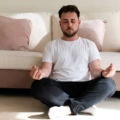Daily meditation is a cornerstone of recovery for many in Sex Addicts Anonymous (SAA). It’s more than a routine—it’s a lifeline. For those in recovery, particularly when dealing with emotional triggers, SAA daily meditations serve as a grounding force that fosters inner peace, awareness, and resilience. In this article, we’ll explore how daily meditation supports recovery, how to use it to navigate emotional triggers, and how to develop a sustainable practice rooted in the SAA program.
Understanding Emotional Triggers in SAA Recovery
Emotional triggers are internal or external experiences that can provoke intense feelings and often lead to unwanted behaviors. For those recovering from sex addiction, triggers may include stress, shame, rejection, loneliness, or even seemingly unrelated experiences that resurface past trauma.
Common Triggers in Sex Addiction Recovery:
- Feelings of abandonment or neglect
- Conflict in relationships
- Exposure to sexual content
- Boredom or isolation
- Stress at work or in daily life
Left unexamined, these emotional reactions can undermine progress and lead to relapse. This is where daily meditation becomes not only helpful but essential.
Why Daily Meditation Matters in SAA
Daily meditation in SAA isn’t about achieving instant serenity. It’s about creating a space each day to reconnect with your higher power, check in with your emotional state, and bring awareness to thoughts and feelings before they become actions.
Key Benefits of Daily Meditation:
- Emotional Regulation: Helps calm the nervous system and reduce reactivity to triggers.
- Self-Awareness: Enhances understanding of thought patterns and emotional responses.
- Spiritual Connection: Strengthens a sense of guidance, humility, and purpose.
- Routine Stability: Establishes consistency in an often chaotic internal world.
Incorporating meditation into your SAA recovery reinforces the idea that progress happens one day at a time—one breath at a time.
How to Practice SAA Daily Meditation
Starting a meditation practice doesn’t require hours of silence or perfect posture. It starts with willingness and intention. The SAA literature and daily readers are excellent starting points, offering insight and affirmations that align with recovery principles.
Step-by-Step Daily Meditation Practice:
- Set Aside Time: Choose a consistent time each day, even if it’s just 5-10 minutes.
- Find a Quiet Space: Somewhere free from distractions where you feel safe and grounded.
- Use an SAA Reading: Begin with a reading from an SAA meditation book or another recovery-based spiritual text.
- Focus on Your Breath: Breathe deeply and let thoughts pass without judgment.
- Reflect on the Reading: What emotion or insight does it bring up? How does it apply to your day?
- End with a Prayer or Affirmation: Invite your Higher Power into your day with humility and intention.
Using Meditation to Navigate Emotional Triggers
Meditation doesn’t eliminate emotional triggers, but it changes your relationship to them. With consistent practice, you become less reactive and more reflective, able to pause instead of act.
Meditative Tools for Managing Triggers:
- Body Scan: Helps notice where tension is held and release it.
- Mantra Meditation: Repeating a calming phrase like “This too shall pass” or “I am safe.”
- Journaling Post-Meditation: Writing down insights or emotions that surfaced.
- Breathwork: Conscious breathing to calm anxiety or anger when a trigger arises.
These practices train the mind to create space between stimulus and response—a key element in maintaining sobriety and emotional clarity.
Sample SAA Daily Meditation: For Grounding During Triggers
Today, I will not run from discomfort. I will meet my emotions with curiosity, not shame. I trust that my Higher Power walks with me through every wave of fear, every memory that stirs my restlessness. In this moment, I choose stillness over escape. One breath at a time, I return to myself.
This meditation speaks directly to the heart of recovery: surrendering control and finding power in presence.
Tips for Creating a Sustainable Meditation Routine
Consistency is more important than perfection. Here’s how to make your meditation practice stick:
Practical Tips:
- Start Small: Begin with short, manageable sessions and build over time.
- Use a Timer or App: Tools like Insight Timer or Headspace can help guide your sessions.
- Pair It With Another Habit: Connect meditation with coffee time, journaling, or bedtime.
- Make It Yours: Add music, incense, or spiritual symbols that resonate with your path.
- Stay Compassionate: If you miss a day, don’t spiral. Start again with love.
Final Thoughts: Grounded in Grace
SAA daily meditation is not just a habit—it’s a healing ritual. When emotional triggers come (and they will), your meditation practice becomes the anchor that keeps you from drifting. It reconnects you with your Higher Power, your values, and your vision for recovery.
By choosing to sit in stillness, you reclaim power over your responses. You honor the inner work of recovery. And you remind yourself that serenity is always just one breath away.



